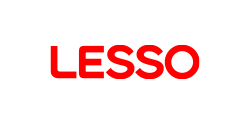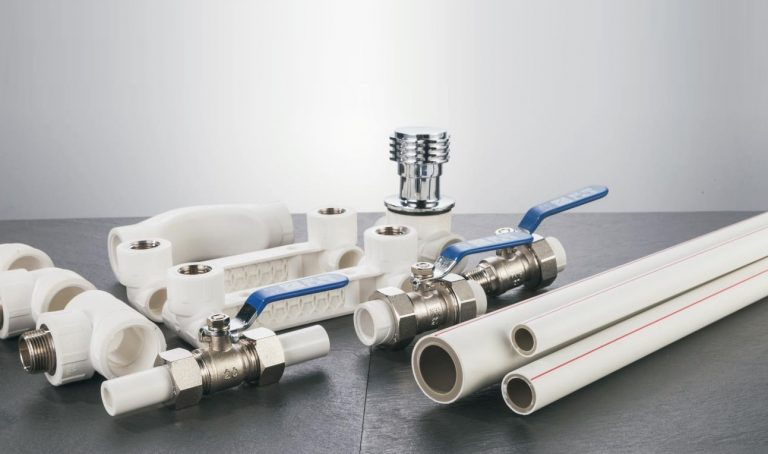The third-most widely used synthetic polymer, PVC, is manufactured and used at the rate of 40 million tons a year worldwide. Its main application is as a conduit for water in various contexts.
What is made of, which makes it a universally sought-after product? The raw material used in it is polyvinyl chloride, whose multitude of beneficial physical and chemical properties make it the ideal choice for a safe and cost-effective channel in a spectrum of infrastructure applications, the foremost being water supply.
What are PVC pipes?
PVC stands for polyvinyl chloride. It is a chlorinated hydrocarbon polymer. In its natural state, it is rigid and brittle. But when combined with additives such as plasticizers, it becomes more resilient and malleable.
Some of its applications are in electrical insulation, medical tubing, flooring, furniture, signage and as a substitute for rubber. But its most widespread use is in the manufacture of pipes, which are used in water supply, plumbing and irrigation.
Depending on the application, a few variants of PVC pipes are used as hot or cold water conduits in industrial as well as commercial contexts. PVC pipes have been used for over 80 years for various commercial purposes. In the United States alone, two million miles of PVC pipelines are functional today.
What are PVC pipes used for?
PVC pipes are ubiquitous in the context of water supply. The pipelines used for water mains almost entirely consist of PVC pipes. Sanitation sewer networks and large-scale irrigation networks also comprise PVC pipes.
In the residential and commercial domain, PVC pipes are used in plumbing, drainage, ,agricultural irrigation, electricity & telecommunications systems and the ductwork of heating and cooling systems.
Underground PVC pipes have a larger bore and a thicker wall and are used by utility companies to supply drinking water through a network to residential and commercial buildings.


An underground PVC pipe network is also used for sewage systems. They are used for rainwater drainage from roofs and other structures. They are also used to construct sprinkler systems for landscaping and also fire sprinkler systems in buildings.
The hot water in HVAC (Heating, Ventilation and Cooling) systems are transported through pipes made of CPVC, a variant of PVC. Cold water in HVAC systems is channeled through PVC pipes.
PVC water supply pipes are also used for agricultural irrigation. It generally saves 30-50% water compared to open channel systems. It can also prevent the occurrence of soil salinization, swamping and cold flooding. Most of the PVC water pipe network is buried underground, so the land utilization rate is high.
The PVC pipeline water delivery system is flexible, convenient, easy to adjust and realize automation, and is suitable for various terrains and soils. Moreover, the water delivery speed is fast, the irrigation efficiency is high, the maintenance is easy.
PVC pipe fittings like bends, branches, valves, brackets and clips can be used in a wide range of pipelines and construction. They can be used to update older pipeline systems that could be wearing out with age. The weakness of pipeline networks lies mainly in the integrity of their joints. PVC pipes can be used to reinforce the junction points so that the entire network will not have to be revamped.
What are the benefits of PVC pipes?
- PVC pipes are the preferred media for transporting water and electricity in a variety of sectors. Their high resistance to heat and corrosion are the main contributors to their extensive utilization.
- Owing to its smooth surface, there is a low level of friction between PVC and flowing liquids when compared to concrete and metal. This makes it a preferred material for pipes that are conduits for water supply.
- It is lightweight and easy to transport over large distances to be laid as pipelines. This means that less fuel is used to transport them, making them eco-friendly.
- It is cost-effective since a relatively simple process is used for its mass production.
- It is easy to mold into different shapes, making it a versatile material with a wide range of applications.
- It is strong and durable and resistant to large amounts of stress. This makes it a suitable material for underground pipes and pipes through which pressurized fluids need to pass.
- An advantageous chemical property of PVC is its inertness or resistance to chemical reactions with other substances. This makes it safe for the transportation of drinking water and water that is used for household purposes.
- PVC can last a hundred years when installed underground. This makes it low-maintenance and a favored material for vast pipeline networks, whose maintenance and overhaul costs would be extremely high with legacy materials like steel, iron and cement.
- PVC pipes are easy to install, dismantle and maintain. Its failure or break rate is extremely low when compared to that of legacy materials.
- The low amount of carbon in PVC is the reason for less harmful emissions during its production. They are easy to recycle and reuse for other purposes, either from the salvage and re-purposing of construction waste or recycling of industrial waste. Eight thousand tons of PVC is recycled every year in Europe, through the VinylPlus program.
What are the differences between PVC, CPVC and uPVC?
PVC in its original form is brittle and rigid. It is primed for a range of commercial and industrial uses by the addition of additives. Plasticizers make it softer and more flexible. Heat stabilizers increase its resistance to high temperatures. UV stabilizers make it resistant to harsh and lengthy exposure to sunlight.
CPVC is a variant of PVC in which the chlorine content is boosted. It has a higher temperature resistance threshold. It can withstand temperatures of up to 200 F when compared to PVC, which can handle up to 140 F before it melts or fails. For this reason, CPVC is preferred for the transportation of hot water in HVAC systems or industrial settings. CPVC is mandated by building codes for this purpose in many cases.
uPVC is unplasticized PVC or PVC in its original form. Without softening additives, uPVC is brittle and rigid. Although this makes it unsuitable for pipes and other purposes that require flexibility, it has a valuable use in construction. It is resistant to prolonged exposure to sunlight and heat and is used as siding or weatherboarding material on the exterior walls of homes in several countries.











